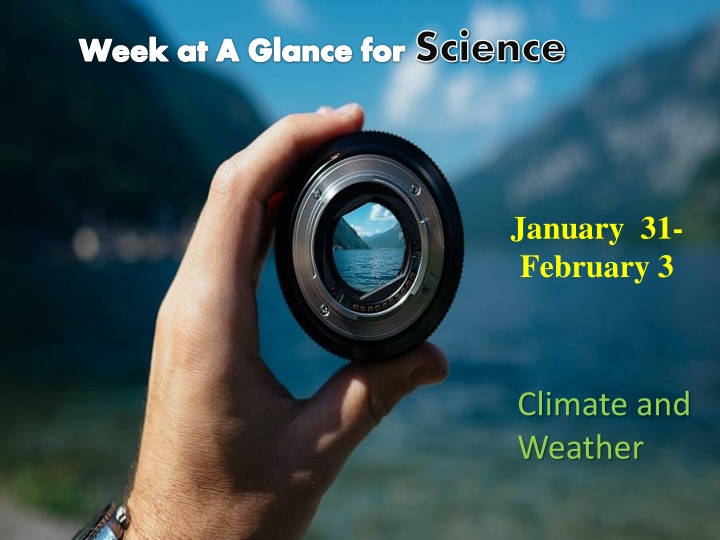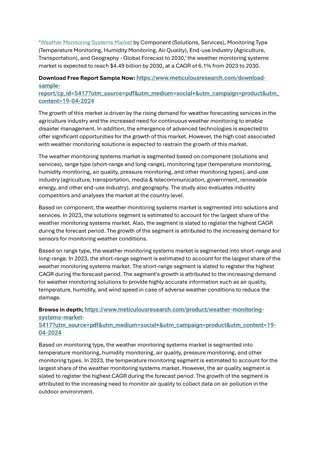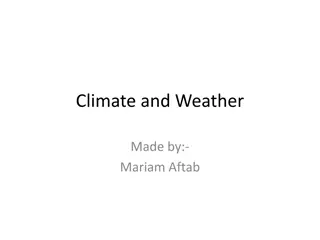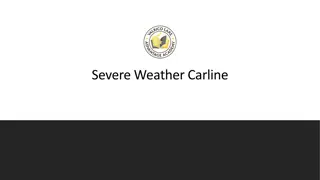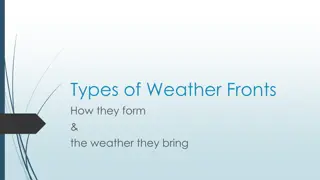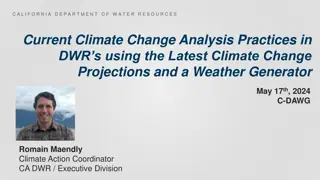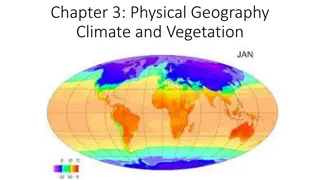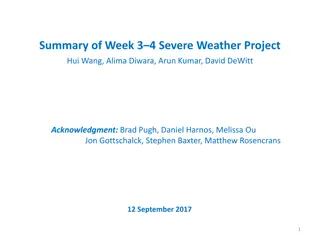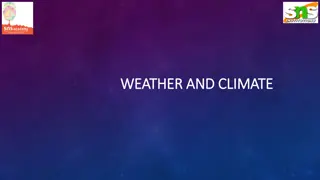Science Week at a Glance: Climate and Weather Insights
Dive into a week of science exploration focusing on climate and weather phenomena. From analyzing atmospheric layers to understanding the impacts of moisture on weather patterns, this overview covers a range of topics including greenhouse gases, hurricanes, wind systems, and meteorological events. Explore the interactions between Earth's components and phenomena shaping our environment.
Download Presentation

Please find below an Image/Link to download the presentation.
The content on the website is provided AS IS for your information and personal use only. It may not be sold, licensed, or shared on other websites without obtaining consent from the author.If you encounter any issues during the download, it is possible that the publisher has removed the file from their server.
You are allowed to download the files provided on this website for personal or commercial use, subject to the condition that they are used lawfully. All files are the property of their respective owners.
The content on the website is provided AS IS for your information and personal use only. It may not be sold, licensed, or shared on other websites without obtaining consent from the author.
E N D
Presentation Transcript
Week at A Glance for Science January 31- February 3 Climate and Weather
a. Analyze and interpret data to compare and contrast the composition of Earth s atmospheric layers (including the ozone layer) and greenhouse gases. (Clarification statement: Earth s atmospheric layers include the troposphere, stratosphere, mesosphere, and thermosphere.) e. Analyze and interpret weather data to explain the effects of moisture evaporating from the ocean on weather patterns and weather events such as hurricanes. c. Develop a model demonstrating the interaction between unequal heating and the rotation of the Earth that causes local and global wind systems. d. Construct an explanation of the relationship between air pressure, weather fronts, and air masses and meteorological events such as tornados and thunderstorms.
Tuesday, January 17 Standard: SS6G2 Explain the impact of environmental issues in Latin America. SS6H1.b Explain conflict and change in Latin America. Learning Target: Explain the impact of environmental issues (air pollution and destruction of rain forest) in Latin America; Explain conflict and change in Latin America (Describe the influence of the Spanish and the Portuguese on the language and religions of Latin America). Warm-up: video (destruction of rainforest) Work Session: Cloze Notes (Brain Wrinkles); Textbook p.346, 401; Environmental issues of Latin America (air pollution and destruction of rain forest). Spain/Portugal colonization of Latin America (language and Religion); TB p.322- 323 Closing: Think-Pair-Share Reminders: Quiz on Wednesday will cover G1,G2, H1b
S6E4. Obtain, evaluate, and communicate information about how the sun, land, and water affect climate and weather. a. Analyze and interpret data to compare and contrast the composition of Earth s atmospheric layers (including the ozone layer) and greenhouse gases. (Clarification statement: Earth s atmospheric layers include the troposphere, stratosphere, mesosphere, and thermosphere.) b. Plan and carry out an investigation to demonstrate how energy from the sun transfers heat to air, land and water at different rates. (Clarification statement: Heat transfer should include the processes of conduction, convection, and radiation.) c. Develop a model demonstrating the interaction between unequal heating and the rotation of the Earth that causes local and global wind systems. d. Construct an explanation of the relationship between air pressure, weather fronts, and air masses and meteorological events such as tornados and thunderstorms. e. Analyze and interpret weather data to explain the effects of moisture evaporating from the ocean on weather patterns and weather events such as hurricanes.
